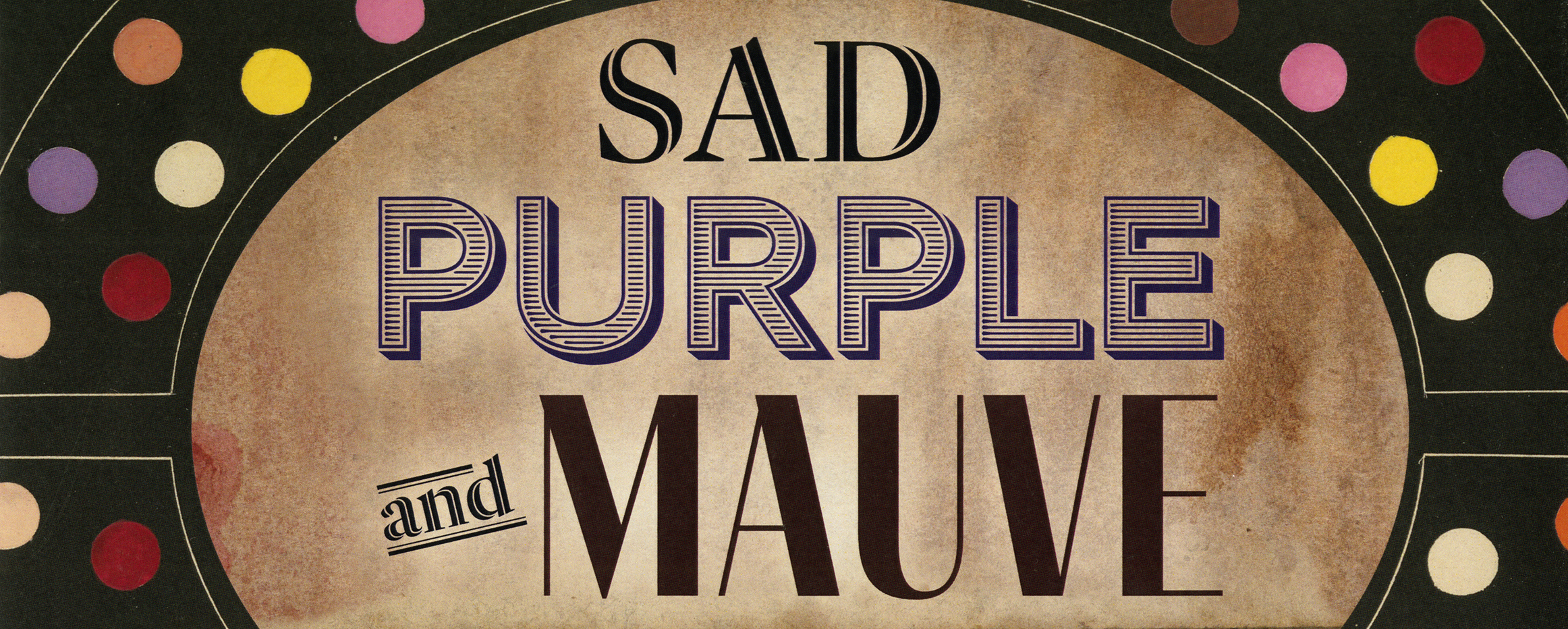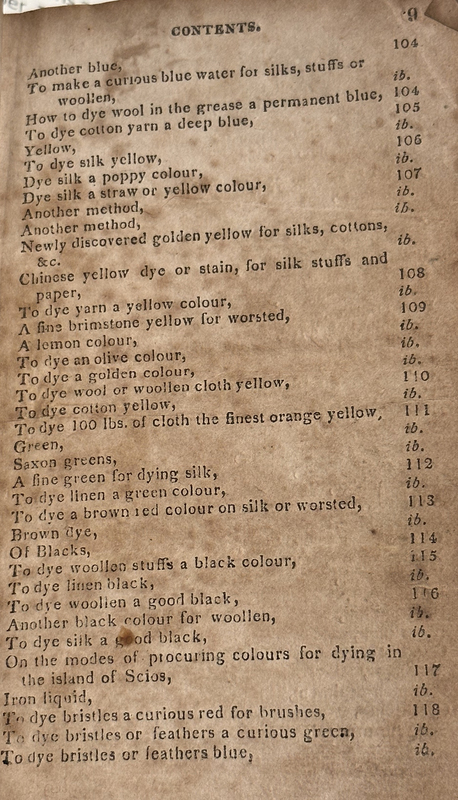Raw Ingredients: Plants and Insects
RAW INGREDIENTS: PLANTS AND INSECTS
Dr. Parker's compendium of dye recipes and techniques, here open to the impressive list of colors that can be achieved, highlights a variety of ingredients that were used in the 19th-century. His recipe for Turkish red lists madder and galls, two basic dyestuffs. The roots of the madder plant (Rubia tinctorum, a relative of coffee) contain a pigment that produces a deep, rich red color that made them essential to Turkish red recipes around the world. Many plant compounds that we prize for their color naturally serve a defensive role in the plant, warding off herbivores like insects. Other anti-insect plant chemicals like resins and tannins are useful mordants for fixing dye molecules to fibers or paper. The galls that Dr. Parker calls for in his Turkish red recipe—likely oak galls—are rich in tannins and common in dyemaking.
Insects themselves are important dyestuffs: cochineal, or carmine, dye is made of crushed cochineal bugs (Dactylopius coccus), a kind of scale insect native to the southwest US and Mexico that feeds on cacti. Red cochineal dye was used extensively in the pre-Columbian Americas for regal and ceremonial textiles before becoming a valuable trans-Atlantic commodity.
— Written by Robert Witkowski (Graduate Student, Plant Biology)
Dr. M. Parker
The Arcana of Arts and Sciences, or, Farmers' & Mechanics' Manual
Washington, PA: Printed by J. Grayson, 1824

